Procedures, guidelines and reports
The Antenatal screening for Down syndrome and other conditions: Guidelines for health practitioners will assist practitioners to discuss screening options in a nationally consistent and safe way, and provide women with information to make an informed decision about screening.
These guidelines are currently being reviewed and updated. An updated version will be available online in 2023. The current guidelines should be read in conjunction with the March 2023 update below.
Update March 2023
From 1 March 2023, the following changes have been implemented:
- serum analyte levels are no longer being reported
- chance of neural tube defects is no longer being reported
- the risk calculation algorithm has been updated to use the ASUM equation for calculation of gestational age.
More detailed information on these changes can be found here: Antenatal screening updates 1 March 2023 (PDF, 210 KB)
First trimester ultrasound reports
The NSU NT Working Group has developed a best practice format for first trimester ultrasound reports.
The reports aim to ensure consistency of reporting and assist with providing the information that laboratories require to perform first trimester screening for Down syndrome and other conditions.
There are three different reports and two versions of each – a completed sample and a blank template available for downloading on this page.
- Singleton pregnancy – First trimester ultrasound report to Laboratory and Lead Maternity Carer (LMC) use this form if the same report is sent to both parties.
- Singleton pregnancy – First trimester ultrasound report to LMC if different from Laboratory
- Twin pregnancy
Removal of nasal bone measurement
From 26 March 2018, the nasal bone measurement was removed from the risk algorithm for Down syndrome and other conditions. Nasal bone identification was only ever an optional part of this screening, and was only included in the risk algorithm if reported at the same time as the fetal nuchal translucency and crown rump length ultrasound measurements by radiology.
The NSU decided to remove nasal bone identification from the risk algorithm for Down syndrome and other conditions based on advice from clinical and technical experts. This decision was supported by the DSOC Technical Working Group and radiology sector.
In this section
-
The Ministry of Health recommends all pregnant women are offered antenatal screening for Down syndrome and other conditions in either the first or second trimester of pregnancy.
-
The National Screening Unit (NSU) recommends all pregnant women are offered information about screening for Down syndrome and other conditions, preferably in the first trimester of pregnancy.
-
Antenatal Screening for Down syndrome and other conditions is monitored using information from laboratory information systems with the district health boards.

